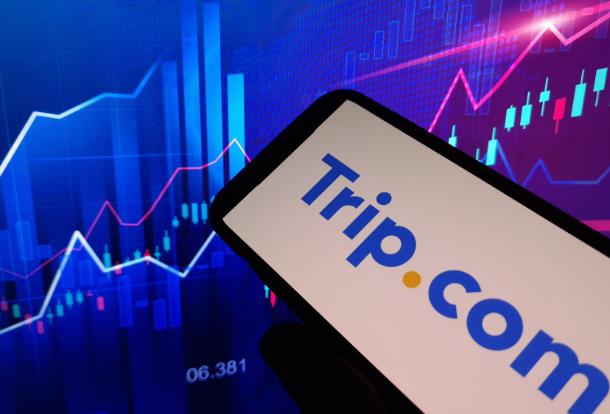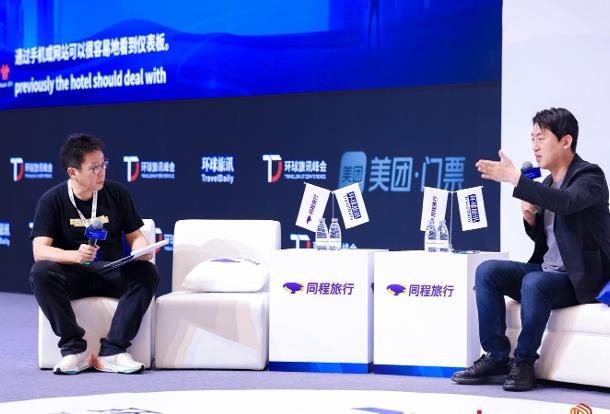ChinaTravelNews - Baidu is the most popular search engine in China and the fifth-largest website in the world based on average daily visitors and page views. The internet giant has developed everything from social networking products to music, mobile, and travel services, but its principle business remains online advertising. Altogether, Baidu’s online marketing services made up 99% of the company’s $7.9 billion in total revenue in 2014.
Han Dong is Baidu’s Director of Destination Marketing, a division that deals with the company’s destination-specific advertisers.
ChinaTravelNews’s Aaron Stewart sat down with Han recently to discuss topics such as the changing face of destination marketing, how TV and mobile have influenced Chinese travelers, and the unveiling of O2O digital service tool Baidu Connect.
Out with the old, in with the new
With spring now sprung, it’s a ripe time for travel. So how do you decide where to go?
Distance, cost, food, and local attractions are all key factors when considering your next vacation. And destination marketing wants to help you decide which place is best for you.
Destination marketing is the practice of promoting a city, region, or country to attract more visitors. Up until recently, most destination marketing was done with traditional media: newspapers and magazines, public transportation, and television.
But with over one billion people around the world traveling internationally every year, and China alone generating half a trillion dollars in total travel revenue in 2014, competition in the travel market is as fierce as ever. That has pushed destination marketing organizations (DMOs) to come up with new ways to attract visitors.
“In the last year or two, the rise of the fan economy, the revealing of WeMedia, the diversification of internet advertising, all brought a new way of thinking to destination marketing,” Han Dong says. “The 2013 show ‘Where Did Daddy Go?’ brought exceptionally good marketing results to places in the show like Snow Village and Jiming Island. Travel-related searches on Baidu for destinations in those popular travel shows grew five, even 10 times.”
TV shows like “Where Did Daddy Go?” – a documentary/reality series that puts Chinese celebrities in challenging parental situations – became a new form of destination marketing. A number of locations featured in the show, like Snow Village in the remote northeast and Jiming Island off the coast of Shandong, saw visitor numbers soar after appearing on air.
A similar phenomenon occurred in the small town of Selby, England, where Taiwanese pop star Jay Chou was married in January. In the wake of Chou’s wedding, the town’s thousand-year-old abbey and nearby castle saw a spike in visitors, mostly from Asia, as tour operators scrambled to add the scenic spot to itineraries and translate visitor brochures into Chinese.
The use of pop culture to promote a destination highlights the current shift away from traditional media and towards connecting consumers with more personalized experiences.
“Ten years ago income was lower, information was incorrect,” Han explains. “When people were making their travel decisions, more relied on advertisers passing on information. If I said, ‘We have the most beautiful scenery, come here and you’ll enjoy service fit for an emperor,’ users had no choice but to believe me, because so few people around them had been there before, and there were no other channels to obtain additional information.”
“But with the way information is flourishing like it is today, consumers are smarter,” Han continued. “You say your scenery is the most beautiful and the service is good, they’ll ask what you are basing it on.”
Offline to online: Baidu and SEM step in
As consumers get smarter, their demands get more specific, and that makes attracting them to your city or region even harder.
Which is where Baidu comes in. As China’s largest website and most-used search engine, Baidu is tapping into its considerable digital firepower to help destinations and DMOs improve awareness among ever-savvy travelers.
And it all starts with search engine marketing (SEM).
“We want to use new forms of display to help destination advertisers raise their ads visibility and click rate, like creative writing, graphics, and direct telephone bookings,” Han said. “This is because travel decisions aren’t only rational, there are also emotional factors. Stirring up sight (pictures and video), sound (music), and other senses will improve marketing results. SEM is the root; surround this root to continually get stronger, and one day it will grow into a towering tree.”
SEM is the foundation, but it’s just the beginning. According to one Baidu survey, the average Chinese person has 4.2 mobile devices, and three-quarters of users have at least two devices that connect to the internet. But users spend only seconds on a given website, giving advertises precious little time to make an impression.
And the competition appears limitless. Over 2 billion ads are displayed on wireless devices per day in China, and Baidu alone works with over 800,000 active online advertisers. Users are presented with an overabundance of information, leaving very little time to sift through it all.
Destination marketing from beginning to end
As Han and his colleagues searched for different ways to reach consumers, they discovered an interesting trend: travelers weren’t just searching for information about a place before they went there, they wanted to know what to do and where to go while they were there.
“Before we thought users just searched a single destination, for example, ‘I want to go to New Zealand’, or Mexico, to travel. They would just search a single place,” Han explains. “Later we found that some would search ‘Where should I travel for Spring Festival?’ or ‘Where should I go for National Day?’ or ‘What places are fun in Mexico?’ So from this we realized we could affect users’ travel decisions.”
Destination marketing was no longer simply about presenting consumers with a destination they couldn’t resist; it was about connecting them with information and services for that destination before, during, and after their trip.
“Now destination marketing can’t just stop at promoting a brand and attracting visitors,” Han says. “It has to add faster and more convenient services, help travelers make better decisions before the trip, worry about everything they might worry about, think of everything they might think of, and offer solutions for his arising needs during the trip, and give him space and freedom to his experience after the trip. Only in this way can you better accomplish the goal of attracting visitors.”
SoLoMo hits the ground running
Destination marketing is now an around-the-clock endeavor, and in China, an endeavor of epic proportions. China boasts a staggering 1.25 billion cell phone users – over 90% of the population – and over 850 million mobile internet users, according to the Ministry of Industry and Information Technology.
So how do destinations reach them all? The key to connecting those consumers with the information and services they need is the phenomenon known as SoLoMo, short for social-location-mobile, a mobile-centric way of displaying local entries in search engine results. SoLoMo came about because of the rise of smartphones and tablets, which utilize their built-in GPS technology to produce location-based results of local businesses.
In practice it’s simpler than it sounds. One recent example was when Baidu teamed up with McDonald’s for a “Parkour Crazy Cherry Cone” promotion, which harnessed the power of SoLoMo to reach consumers on the ground level – literally.
“Baidu Maps would automatically send a push notification to users who were three kilometers or less from a McDonald’s Dessert Station,” Han explains. “Users could then initialize a search and click the cone image to instantly take part. After you got your cherry cone and shared it on a social website, it inspired the next person to take part in the event. The event got really good results, and succeeded in combining with SoLoMo.”
Baidu Connects consumers with services
Baidu took its mobile initiatives even further in September 2014 with the introduction of Baidu Connect, a digital tool that leverages SoLoMo technology to help businesses deliver customized services and information directly to consumers. Businesses that join the Connect platform are searchable and discoverable in Baidu Mobile and Baidu Maps, allowing users to do everything from purchase tickets to scan QR codes to monitor social feedback in real-time.
“After connecting with the information, the main thing is service,” Han said. “If you go on a website to look at airfare or hotel information, it’s because you’re hoping to make a purchase. So the next step is to connect you with those services.”
Emei Mountain, a popular tourist destination in Sichuan province, is one of the 600,000 businesses and counting to have joined Baidu Connect. The platform allows users to book tickets, enjoy voice-guided tours, view 360 degree panoramas of the scenery, and monitor crowds in real-time, in addition to writing reviews and navigating the terrain with GPS-enabled maps. Baidu Connect bills itself as a one-stop tool for doing everything a traveler would need or want, before, during, and after the trip.
One industry analyst said that the travel industry is the service industry’s biggest hope for using internet to transform the sector, a channel to transform traditional travel by uniting people and services.
Mobile vs. PC and beyond
All signs point to mobile being the next big thing in destination marketing. Last July, mobile search volume passed PC in China for the first time, when mobile exhibited an annual growth rate of 50% year-on-year, versus just 8% for PC.
And according to Baidu, 93% of Chinese travelers use their cell phone while traveling to keep in touch with family and friends, and 60% use their devices to find destination info before departure. But only 21% use their mobile device to book and pay for their trip ahead of time. Tapping into that potential, and continuing to integrate information and services with travelers’ mobile devices, is the key to taking the next step forward.
In the ever-expanding world of mobile technology, Han sees lots of room for improvement. Scenic digital museums, music with local characteristics, and more 360 degree panoramas are a few things he’d like to see in the near future.
As for destination marketing in general, Han’s advice is simple: listen to the people.
“My biggest suggestion for content marketing is follow the consumer, listen to their hearts, satisfy all their travel demands,” Han said. “Any reason can inspire a trip. You don’t have to limit your content development; diverge and think more, that will produce better results.”
With SoLoMo and Baidu Connect helping both destinations and travelers, destination marketing is in a good place. That is, until the next big thing comes along: perhaps when a destination is simply chosen for you? Only time will tell. (Report by Aaron Stewart)




